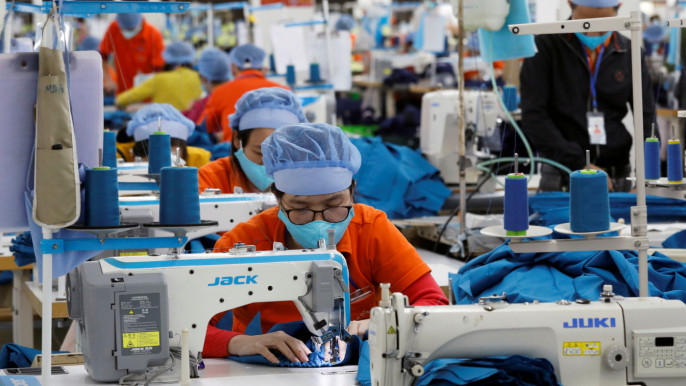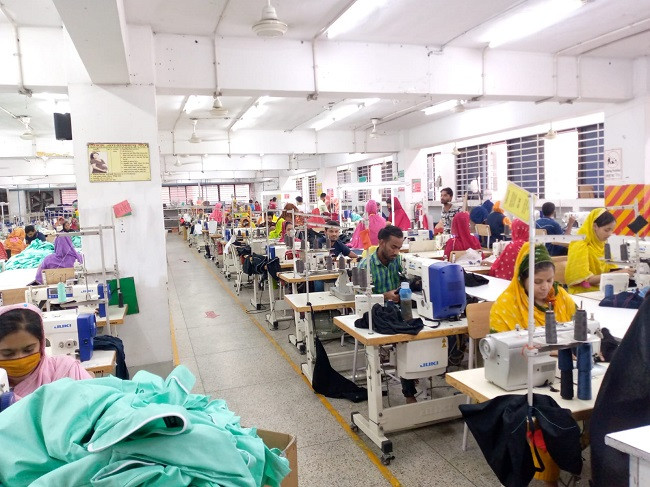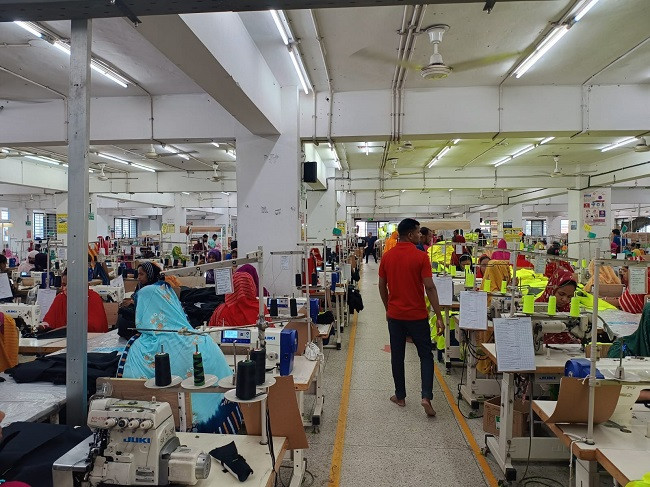Bangladesh apparel faces $27b export hit from extreme weather by 2030: Study
The Bangladesh Garment Manufacturers and Exporters Association last year set a target to increase their exports to $100 billion by 2030.
Bangladesh’s apparel industry may face a $26.78 billion export hit from extreme heat and flooding by 2030 as workers struggle under high temperatures and factories close, according to research by Schroders and Cornell University released on Wednesday.
The study titled “Higher Ground: How Fashion Supply Chains are Being Impacted by Extreme Heat and Flooding” forecasts that under a climate-adaptive scenario, if the apparel industry moves quickly to reduce heat stress for workers, the country’s apparel export earnings could reach $122.01 billion by 2030 and $1,038.22 billion by 2050.
The Bangladesh Garment Manufacturers and Exporters Association last year set a target to increase their exports to $100 billion by 2030.
Speaking to The Business Standard on Wednesday evening, industry insiders said the exports would be higher than the target if the industry was climate-adaptive.
Along with the surge in export earnings, the study suggests Bangladesh’s employment in the apparel industry may reach 4.83 million by 2030 and 6.31 million by 2050. It mentioned that employment was 4.22 million in 2021.

Under the non-adaptive scenario, which calculates the damage of high heat stress and flooding, export earnings will drop to $95.22 billion by 2030 and $326.90 billion by 2050. Employment will also drop to 4.57 million by 2030 and 5.04 million by 2050.
As a result, Bangladesh could face a 21.95% shortfall in export earnings, or missing out on $26.78 billion, by 2030 and a 68.51% shortfall in export earnings, or missing out on $711.32 billion, by 2050.
Extreme heat, flooding threatening Asian apparel hubs
Extreme heat and flooding could erase $65 billion in apparel export earnings from four Asian countries – Bangladesh, Cambodia, Pakistan and Vietnam – by 2030.
The study also mapped out the supply chains of six unidentified global apparel brands operating in the four countries and found all six would be materially affected. For one sample brand, that could amount to 5% of annual group operating profits.
The findings should act as a wake-up call to both an apparel industry facing significant financial costs and to investors confronted with sparse information on companies’ exposures, the report’s authors told Reuters.
“Among the suppliers and buyers we talked to, not one had their eye on these two issues (heat and flooding),” said Jason Judd, executive director of the Cornell Global Labor Institute.
“The climate response by the industry is all about mitigation, about emissions and recycling, and little or nothing with respect to flooding and heat,” Judd said.
Understanding climate-related physical risks to companies in a warming world is critical, but the process is in its infancy, with few businesses disclosing enough information and few investors undertaking proper assessments.
“There is so little data on this…There are some [apparel] brands not disclosing the factory locations of their suppliers,” said Angus Bauer, Schroders’ head of sustainable investment research.
Bauer said Schroders, which manages more than $874 billion in assets, would increase engagement with companies over their disclosures, and he called on firms to work with suppliers and policymakers to build adaptation strategies that consider the impact on workers.
Using projections, the researchers analysed future heat and flooding levels to estimate what would happen under a “climate adaptive” scenario and a “high heat and flooding” scenario.
Under the second, workers would suffer more “heat stress”, with worker output declining as the wet-bulb globe temperature, which measures heat and humidity, rises.
Flooding will also force factories to close in the four countries, which account for 18% of global apparel exports and employ 10.6 million workers in apparel and footwear factories.
The overall fall in productivity would lead to a $65 billion shortfall in projected earnings between 2025 and 2030 – equivalent to a 22% decline – and 950,000 fewer jobs being created, the study found.
By 2050, lost export earnings would reach 68.6%, and there would be 8.64 million fewer jobs.
What Industry leaders say
Shams Mahmud, managing director of Shasha Denim Ltd, said, “This is something that textile and RMG owners have been dealing with for the last few years. We have seen that due to the increased heatwave in Bangladesh, spinning and fabric weaving units have to lower their temperatures inside the units using chillers which are highly energy intensive. In a way, it also increases production costs.”
“Also, we have to closely monitor the temperature and humidity and give shift breaks frequently to make sure workers are fully hydrated,” he added.
He said because of breaks and increased humidity, the workplace environment suffers which leads to lower productivity. Also because of heat, there is a risk of fire hazards as only a small spark can lead to fire hazard situations.
In the RMG and textile industry, he said most of the machines they use are high-friction machinery, this is dangerous and also they produce a lot of heat.
“We have to think about water usage as this will inevitably in the long run. The government and industry stakeholders have to come together to take out a long-term strategy as this will be a national problem down the line,” said Shams Mahmud.
Echoing with Shams Mahmud, Pacific Jeans Managing Director Syed Mohammed Tanvir said they have invested in some sophisticated machinery to minimise workplace temperature to make a worker-friendly environment.
He further said considering the climate change effect on people’s lives and livelihood, they have also started a programme to create jobs for flood-affected people.
This project started a year ago and under this initiative they trained them and provided jobs, he added.
Mostafiz Uddin, founder and CEO of Bangladesh Apparel Exchange, said “In some cases, our industry people are not well aware about it.”
It is not a problem for only manufacturers, he said, adding, “The climate change will affect brands, retailers, manufactures and the government.”
He further said, “We all should work together to minimise potential losses.”
Mostafiz Uddin said, “We should take an action plan for the apparel industry in line with the UN climate action plan.”
Recommendations for all
The report recommended treating heat and flood events as health hazards with paid leave for events and related illnesses, and providing the right to stop work. Alter work hours, effort levels, rest and hydration based on indoor wet-bulb temperature standards.
It suggested developing social protection mechanisms and climate adaptation finance that redistributes costs and risks away from apparel workers.
Brands, employers, unions should establish binding agreements and foster formal partnerships between brands, manufacturers, unions, governments to address and adapt to climate breakdown, it added.
It also mentioned brands and suppliers need to explore return on investment from adaptation measures and support suppliers to retrofit or relocate nearby in lower risk locations.
The study recommended that investors engage with apparel companies and their stakeholders to encourage adoption of adaptation measures given the focus to date is almost exclusively mitigation.
The government needs to integrate climate adaptation and worker-rights-related factors within trade policies, it added.





























